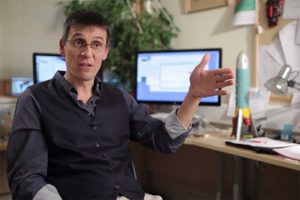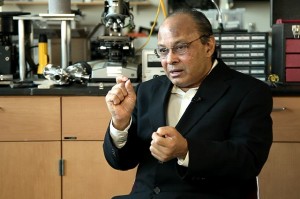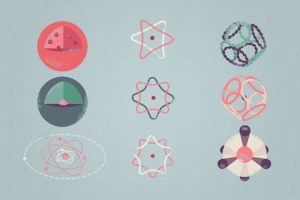Formation of Exoplanets
Astrophysicist Didier Queloz on protoplanetary disks, the temperature balance of the solar system, and movemen...
Why is it impossible to see a quark in the laboratory? What makes up the mass of a nucleon? Frederick W. Gluck Professor of Theoretical Physics at the Kavli Institute for Theoretical Physics and a winner of the Nobel Prize in physics David Gross speaks on the correct theory of the nuclear force.
Over the last 100 years we have been probing and trying to understand what goes on inside the nucleus of atoms. It was very difficult because one can’t just look inside the atom, one has to follow Rutherford and hit the atom with all sorts of projectiles, other particles and see what happens in the collision. That journey has been a long journey, but we think we have arrived, in fact now over thirty years ago, at the answer. We now understand the forces that act within the nucleus. And the combination of that hundred-year journey, maybe a thousand-year journey in fact, is to have a very detailed picture of all the forces of nature, that act around us.
You can’t get the quark out of the atom, no matter how hard you hit. People went to higher and higher energies, hit harder and harder — no quarks and yet in these experiments it seemed that the quarks were moving around freely inside the proton. And that confusion was explained finally by our discovery of what we called asymptotic freedom. Asymptotic freedom means, that there are forces in nature, in fact there is only one force in nature that does this, which is what we discovered, that has the very strange and unusual property, that the force between two particles becomes weaker and weaker the closer they are together and the further and further they are apart, it become stronger and stronger. It’s very counterintuitive, usually force gets weaker when you pull things apart, interact less strongly, but in this case it was exactly the opposite, which was surprising and lead us to a very unique, specific theory of the nuclear force, which is called now quantum chromodynamics. It’s not easy to explain how that works, but we understand in great detail, how that comes about.
When you step on the scale every morning and you say: “Oh my god, I’ve gained another kilogram!”, what makes up that mass? It’s the mass of all the protons and neutrons, that the nuclei of carbon and all the atoms that exist in your body are made out of. But where does their mass come from? Those protons and neutrons are made out of quarks. So does it come from the mass of the quarks in your body? Quarks are almost massless, they don’t have any mass. That’s not what makes up your weight. What makes up your weight is energy, so you’re pure energy. Energy, according to Einstein, is just the measure of mass or mass is the energy of a body at rest. So what makes up the mass of the proton is the energy of all the quarks inside the proton, which are zooming around very fast, almost at the speed of light. So you’re just confined kinetic energy of quarks and so-called gluons, the quanta of the force, that’s getting stronger and stronger the further apart they are.

Astrophysicist Didier Queloz on protoplanetary disks, the temperature balance of the solar system, and movemen...

Physicist Srinivas Sridhar on super resolution imaging, an entirely new way for light to propagate, and a brea...

Physicists observe single-molecule conductance behavior that could be important for future device technologies...